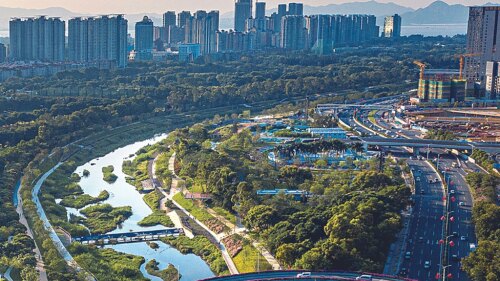Even before the event began, the more than 300 architects, planners, developers and consultants attending the Sept 23 California High-Speed Rail TOD Marketplaceat Anaheim Convention Center were anxious to get high-speed rail (HSR) moving in California. After they heard a presentation about France’s HSR network, they had a better idea of how rail stations can improve urban economies and city planning. Co-produced by Urban Land Institute’s California District Councils, the event revealed both the openings and the roadblocks to an advanced rail network. Aside from the U.S., most other industrialized nations use HSR to propel growth, cut carbon and avoid airports. Still, California has a jump-start with $10 billion in bonds.
Andreas Heym, director of development for consultants AREP, narrated a tour of French HSR stations, and how they connect urban-planning loose ends in many cities, from large metropolises to country towns.
In Marseille-St. Charles, for example, a large, outdoor stairway – not unlike Rome’s Spanish Steps – had “barely survived the 1970s” urban renewal, said Heym. For the arrival of HSR, the city performed a major reorganization to integrate and elevate all transportation in the area – bus, rail, HSR – onto one pedestrian level. “The city’s historic station was renovated, and the historic stairway now leads to a new, revitalized city center.”
HSR funding in France is likewise multi-leveled. Many Americans may be used to dealing with one controlling economic authority for such huge projects – and many may believe that is the most efficient method of designing and building them. (It certainly works that way in China.) However, Heym said many major French stations are financed and managed through complex public/private entities: “People get together and partner these projects; there is not one authority.” The Marseille St. Charles high-speed rail station was financed by six partners, including the operating rail company (26%), the City (21%) and the European Union (11%).
Heym also said it’s not too late for Americans to get into the HSR game. “The U.S. plan has 40 years to build: a totally possible scale of time,” said Heym. “It just needs to start.”
Ron Altoon, incoming Chair of ULI Los Angeles, and principal at Altoon + Porter Architects, detects a crucial cultural difference between the U.S. and France when it comes to major infrastructure.
“The French are remarkably committed to their civic works.” he said. “Everything they do is for their national identity, lasts for centuries, and the mandate from the government is that it be iconic – making you proud and inspired. So, in their public/private partnerships, the private side comes in knowing this will be an irreducible commitment. However, the American concept of the lowest-qualified bid really means the lowest bid with lots of change orders. We have to look at this as a 100-year investment, not a real-estate investment. We are essentially saying we are low-class if we embrace the low-bid mentality.”
China, for its part, is building HSR on government-controlled steroids. Jeff Heller, partner with Heller Manus Architects, and a member of Governor Arnold Schwarzenegger’s HSR China delegation, noted that HSR now employs six million people, and that China recently imported $10 billion of HSR technology to Brazil. “We are being left in the dust in the United States,” he said.
Commenting on Heller’s presentation, Altoon agreed that China’s is a market economy in a command system, allowing them to make incredible strides. “The infrastructure they are creating will, within five years, be unparalleled in the rest of the world. Every city has a new airport, new roads, high-speed trains and major terminals. Where they are failing is in their mega planning, which is not human-scaled, not even built with an understanding of their own culture. But their big, bold moves they are doing well, and that’s feeding their economy.”





